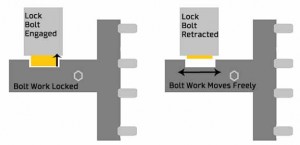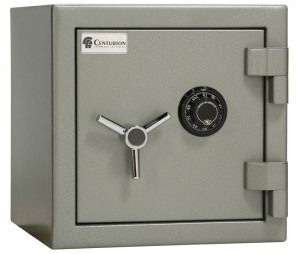How many times a day do you use your safe? Have you ever stopped to think about how it works, or if you have the right kind of safe you need to protect what you need to secure? Throughout store managers’ shifts, they’ll use a multitude of different things, from cash registers to filing cabinets. One of the most used of these items is the store’s safe. You depend on these metal boxes to protect your most valuable items. Let’s walk through how these containers work to keep your valuables safe.
The Safe Components
One key component is how the lock on the safe works with the boltwork to open the door. The lock bolt disengages from the boltwork when the correct combination is entered, thus, allowing it to freely move as the handle is turned. When the safe is locked, the lock bolt keeps the boltwork from moving.
Of course, different safes have different internal components. And there are several additional security features that can make safes much more difficult to penetrate, including things like relockers, hardplate, and glass.
Safe Component – Glass
If a safe has glass installed behind its front wall, the glass will shatter if the safe is tampered with. This, in turn, will cause a multitude of relockers to fire, and the safe will fail to open.
Safe Component – Relocker
What’s a relocker, you ask? Relockers are what keep the safe from being opened if the primary lock is defeated. Typically, there are relockers already built into the lock itself, but you can opt to have external relockers installed in the door. Improper installation, vandalism, and failed opening attempts are just some of the reasons relockers will fire.
Safe Component – Hardplate
Safes can also have different types of hardplate. Hardplate is a barrier that is installed within the walls of the safe safe to protect the lock. It can be constructed from a variety of composites, ranging from concrete, to steel, to ball bearings. Heavy-duty safes will often use a combination of different types of hardplate, which will cause a chain of events and further deter the thief. For example, the first layer could be an extremely hard surface that will simply heat up the potential crook’s drill bit. Next, the drill might hit a layer of brass, which will melt and immediately harden onto the drill bit, causing it to snap. And once the drill bit has snapped it will have to be removed before moving on to the next layer. If you’re a thief this scenario will take so much time that the cops will surely get there before you can go any further.
Safe Security Features
If you have all of these security features installed, they combine to make your safe much more secure and easily accessible only to the person with the working code. The makeup of the safe is largely determined by its purpose (typically, one doesn’t take the same precautions to secure $5,000 as they do to secure $5,000,000), and, because of this, safes can be fire-resistant, drill–resistant, and/or torch-resistant. Check out this post detailing the different types of safes available.
Do you have any questions about your safe? Contact us here at LockNet! We’d love to help!

